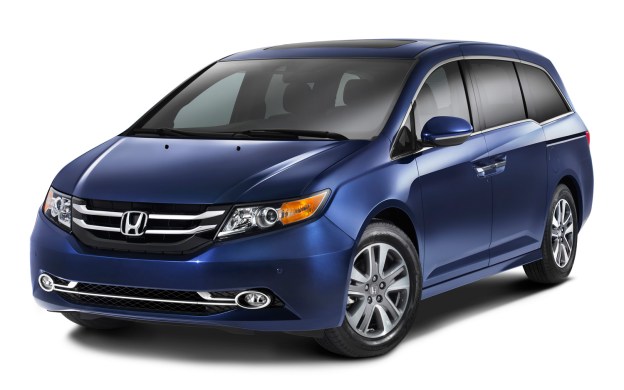
The idea of Honda touting an in-car vacuum for the new Honda Odyssey at the New York Auto Show makes you wonder − what’s next?
And to think I thought the idea of in-car cup holders that can keep beverages hot or cold was groundbreaking when it was first introduced some years ago.
The HondaVac, featured as standard equipment on the new 2014 Odyssey Touring Elite and an industry first, functions much like the typical vacuum used for cleaning up your home. It comes complete with an integrated suction hose, a replaceable filter and a canister bag.
Developed in conjunction with Shop-Vac, the nozzle accessories for the Honda vacuum are integrated into space on the driver’s side bulkhead of the rear cargo area. The HondaVAC is powered by an electric motor that operates continuously when the engine is running and up to eight minutes when the vehicle is turned off.

Of course, the HondaVac isn’t the only new feature on the new Odyssey Touring Elite minivan.
The 2014 Odyssey also sports new design cues like a more sculpted hood and new twin-bar grille, and an all-new interior center-stack.
Standard technology on the award-winning family van includes Keyless Smart Entry with push button start, HD radio, an SMS text messaging function, and HondaLink featuring the Aha Mobile interface.
HondaLink, which debuted on the 2013 Honda Accord, enables Odyssey owners to use their HondaLink smartphone app to uses their online content to create live, personalized radio stations, and hear updates and news feeds from Facebook and Twitter.
Additional technology features include an expanded view driver’s mirror, Forward Collision Warning (FCW) and Lane Departure Warning (LDW).
But the new HondaVAC makes you wonder if our desire for everything to be more convenient might pave the way for even wilder in-car features? And if so what could they be? Tell us your ideas (no matter how fanciful) below in comments.
Editors' Recommendations
- Modified Honda Odyssey minivans transport Detroit coronavirus patients
- Honda joins GM, Mercedes, Toyota in self-driving group


